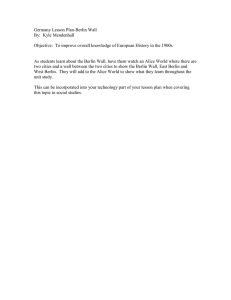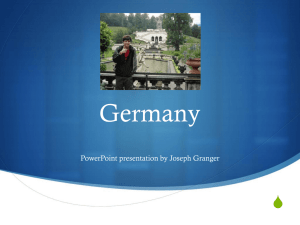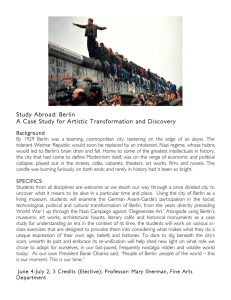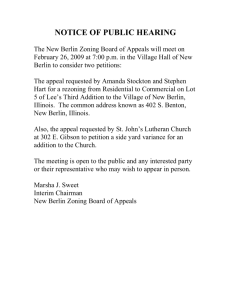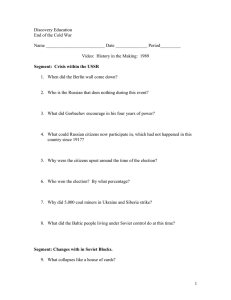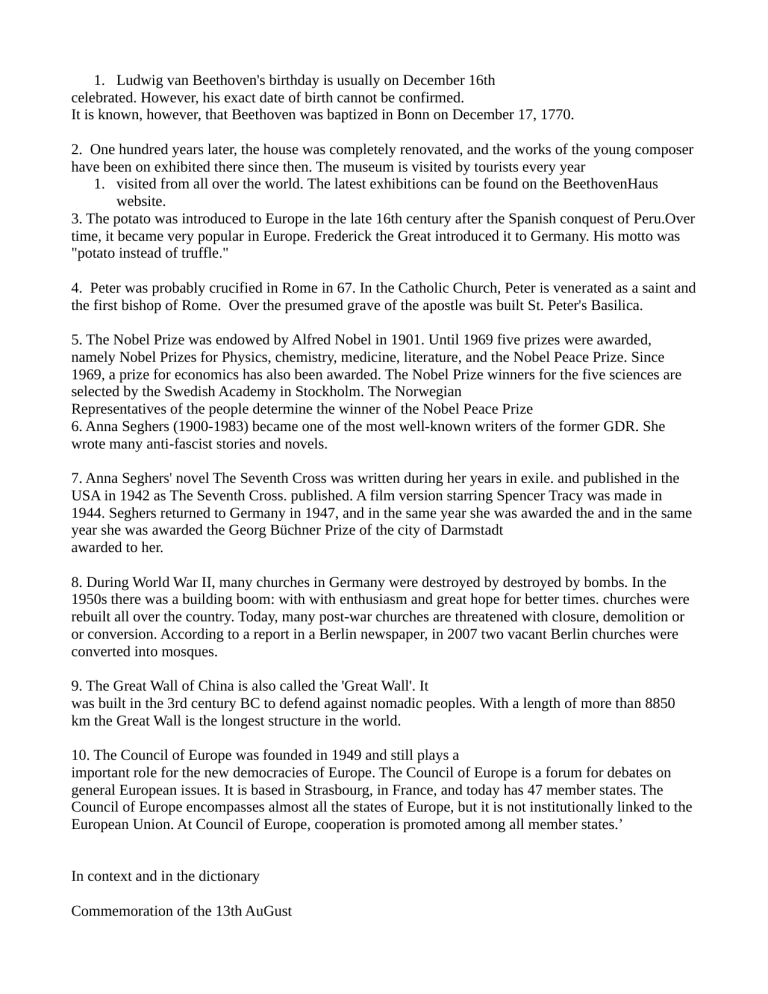
1. Ludwig van Beethoven's birthday is usually on December 16th celebrated. However, his exact date of birth cannot be confirmed. It is known, however, that Beethoven was baptized in Bonn on December 17, 1770. 2. One hundred years later, the house was completely renovated, and the works of the young composer have been on exhibited there since then. The museum is visited by tourists every year 1. visited from all over the world. The latest exhibitions can be found on the BeethovenHaus website. 3. The potato was introduced to Europe in the late 16th century after the Spanish conquest of Peru.Over time, it became very popular in Europe. Frederick the Great introduced it to Germany. His motto was "potato instead of truffle." 4. Peter was probably crucified in Rome in 67. In the Catholic Church, Peter is venerated as a saint and the first bishop of Rome. Over the presumed grave of the apostle was built St. Peter's Basilica. 5. The Nobel Prize was endowed by Alfred Nobel in 1901. Until 1969 five prizes were awarded, namely Nobel Prizes for Physics, chemistry, medicine, literature, and the Nobel Peace Prize. Since 1969, a prize for economics has also been awarded. The Nobel Prize winners for the five sciences are selected by the Swedish Academy in Stockholm. The Norwegian Representatives of the people determine the winner of the Nobel Peace Prize 6. Anna Seghers (1900-1983) became one of the most well-known writers of the former GDR. She wrote many anti-fascist stories and novels. 7. Anna Seghers' novel The Seventh Cross was written during her years in exile. and published in the USA in 1942 as The Seventh Cross. published. A film version starring Spencer Tracy was made in 1944. Seghers returned to Germany in 1947, and in the same year she was awarded the and in the same year she was awarded the Georg Büchner Prize of the city of Darmstadt awarded to her. 8. During World War II, many churches in Germany were destroyed by destroyed by bombs. In the 1950s there was a building boom: with with enthusiasm and great hope for better times. churches were rebuilt all over the country. Today, many post-war churches are threatened with closure, demolition or or conversion. According to a report in a Berlin newspaper, in 2007 two vacant Berlin churches were converted into mosques. 9. The Great Wall of China is also called the 'Great Wall'. It was built in the 3rd century BC to defend against nomadic peoples. With a length of more than 8850 km the Great Wall is the longest structure in the world. 10. The Council of Europe was founded in 1949 and still plays a important role for the new democracies of Europe. The Council of Europe is a forum for debates on general European issues. It is based in Strasbourg, in France, and today has 47 member states. The Council of Europe encompasses almost all the states of Europe, but it is not institutionally linked to the European Union. At Council of Europe, cooperation is promoted among all member states.’ In context and in the dictionary Commemoration of the 13th AuGust The Berlin Wall was built in 1961. Without warning, it was erected almost overnight by the SED government. government. The country was divided and families were separated by the Wall. In the following report we will discuss its role in post-war politics and how it became a symbol of the became a symbol of the Cold War. After 28 years, the border was was unexpectedly reopened on November 9, 1989. Still in October 1989, the 40th anniversary of the GDR had been celebrated with great jubilation. The GDR Chairman of the Erich Honecker had said: "The Wall will stand for stand for another 100 years." On August 31, 1990, the Unification Treaty was was signed by the two German states and the four allies, and on and on October 3, 1990, East and West Germany were reunited. From a report of the 'Berlin Wall Foundation' one can learn you can learn more about the deaths at the Wall. According to the report "well over 100,000 citizens of the GDR" attempted to flee between 1961 and 1988 attempted to flee across the inner-German border or across the Berlin Wall. "Well over 600 of them were killed between shot by GDR border guards or died during escape attempts between 1961 and 1989. during escape attempts. They drowned, suffered fatal accidents or committed suicide." Directly at the Berlin Wall at least 136 people were killed between 1961 and 1989. The Foundation's research project documents the life stories of these 136 Wall deaths. Günter Litfin was the first and Chris Gueffroy was the last victim of the Berlin Wall. 1. Since Berlin became the federal capital again and almost the entire government has been relocated to Berlin, Bonn has become has become an important, if no longer so large, administrative and research center. Directly in Bonn on the Rhine stands, for example, the former Bundeshaus, which was the home of the federal parliament from 1949 to 1999. until 1999. Since 2007, the building has been called the World Conference Center Bonn' since 2007 and despite financial difficulties, it is scheduled for completion in 2013. Translated with www.DeepL.com/Translator (free version). 2. Both sides have stated for some time that an agreement on the on the construction of the new high-rise building cannot be reached unless the insurance issues are resolved first. The construction boss said, "The lack of an agreement means that several court cases against the construction company cannot be dropped. can be discontinued. 3. The crossing of the Atlantic Ocean by Cristoph Columbus in 1492 led to the rediscovery of America forthe Europeans. Columbus himself never learned that he was not discovered not the sea route to India, but a new continent. discovered had discovered. 4. When a bee discovers a field with many flowers, it tells the other bees in its hive the other bees in its hive by performing a peculiar dance. performing a peculiar dance. Zoologists have been studying this strange form of communication for years. The bee dance was already described by Aristotle. In 1973 Karl von Frisch received the Nobel Prize for his decoding of the bee dance. 5. As the Humboldt University in Berlin was located in the so-called East Sector of the city, Freie Universität Berlin was founded in West Berlin in 1948. Berlin was founded. The new university got its name because it was in the 'free' part of the city. 6. When Schliemann in the year 1876 with the excavations of the 'gold-rich Mycenae', he had already discovered and excavated innumerable works of gold in the 'Homeric Troy' and excavated them. The interior of the great royal palace of Troy has, even if the archaeologist did not immediately recognize it or wanted to believe it, many similarities with the palaces of Mycen. 7. Depending on whether a dramatic action generates in the spectators identification or alienation, the theater historian divides the dramas of the divides the dramas of the early twentieth century into classic and epic forms. This began the discussion about the differences, but also the similarities, between 'closed' and 'open' forms of drama. 8. Since the supporters of the Enlightenment in the 18th century wanted to make reason the standard of all things, many questions arose. the standard of all things, many questions arose about the belief in revelation arose. Kant developed a philosophical religious doctrine, a socalled religion of reason. 9. Louis Pasteur proved through his experiments that fermentation caused by the action of small fungi and bacteria and in doing so he showed how to prevent them. 10. Even if there are Pasteur critics today who think that his Working methods were 'unorthodox', he stays in France National hero and the criticism does not change the fact that for most people in the world Louis Pasteur among the most distinguished belongs to scientists of history. 11. In context and in the dictionary Ferdinand Graf von Zeppelin (1838-1917) took up a military career very early in his a military career. From 1855 onwards he was a cadet at the Ludwigsburg school, in 1858/59 he studied in Tübingen and in 1862 became first lieutenant in 1862. Zeppelin undertook several study trips to France and the U.S., where he served as a military observer in the North American Civil War 1863-1865 on the side of the northern states. side. There he gained his first experience with the military use of hot air balloons. use of hot air balloons. Count von Zeppelin took part in the 1866 in the German War and in 1870/71 in the Franco-Prussian War. Zeppelin's first airship LZ1 was developed and built in 1899. As died in Berlin on March 8, 1917, he was celebrated as a national hero. celebrated. Even though 'real' zeppelins have not existed for about 60 years, the Count's airships are still famous all over the world. famous. The Zeppelin in the First World War The first Zeppelin, the "LZ1", was launched in 1900 under the direction of Count Zeppelin. first Zeppelin, the "LZ1". In the following years the airships became bigger and faster. After the outbreak of World War I, zeppelins were taken over by the were taken over by the navy and army. They were first used for reconnaissance flights over the North Sea against the English fleet and later later for bombing over England. When the zeppelins made their first air raids over England and London, they aroused great terror, for there was no successful defense against them when they flew at an altitude of 4000 meters. Neither the English fighter planes nor the artillery shells could reach such an altitude. However, in a relatively short time, the English improved their air defenses by increasing their fighter planes and improved the flak (antiaircraft gun). From this point on, they could attack the Zeppelins with phosphorus munitions. attack. Since the zeppelins were filled with combustible hydrogen sometimes a single hit was enough to turn the airship into a huge fireball. airship into a huge fireball. The attacking airships suffered heavy losses, and for the crew a flight against a flight against England became a 'suicide mission'. Although the zeppelins had little tactical value, they did have they did have a certain psychological and strategic value in the early and strategic value. The deeper they penetrated into the English hinterland, the more forces and artillery had to remain in England to defend themselves. and therefore could not be used in the decisive battles in France. in France. 1. The first universities developed in the 12th century in Italy (Bologna, Salerno, Padua), then the universities of Paris, Cambridge and Oxford emerged. In Berlin there are two world-renowned universities: the Humboldt University and the Free University. and the Free University. Almost 50,000 students were enrolled at enrolled at the two Berlin universities. 2. In this section of the book, we will deal with religious movements. movements. Almost 57 million people in Germany in Germany profess a Christian denomination. Around 4.3 million Muslims and just under 100,000 Jews currently live in Germany 3. Among the resistance fighters in the Third Reich were not only clergymen of various denominations, but also citizens, soldiers but also citizens, soldiers, students and politicians, especially from the left-wing left-wing movements. Political resistance to Hitler changed over time; as early as the mid-1930s, it increased among among ordinary citizens. Considering the brutality of the regime this development is easy to understand. 4. In Kafka's novella The Metamorphosis we read something fantastic: Gregor Samsa transforms into a giant vermin. His family is very worried about the reactions of the neighbors. Gregor and his father do not get along at all. not at all. Under such conditions, problems multiply extraordinarily fast 5. I bought a promising book yesterday. It is contributions from several experts in the field of migration. The selection of literature in this book unfortunately, according to the American custom, concentrates on Works in English language 6. During the migration of the peoples the Germanic tribe of the of the Bavarians settled in what is now Bavaria, Austria and South Tyrol. Today five musicians wearing lederhosen call themselves from Lower Bavaria call themselves 'Die Bajuwaren'. Their music is a mixture of folk music, rock and pop. Their motto is: 'Music for everyone. 7. tThe little child showed his mother his freshly washed hands. "I washed my own hands, Mom," he said proudly. proudly. The rather strict mother replied harshly: "Why didn't you wash didn't you wash your face, too?" Then her "Leave the poor child alone!" and then he put her to bed. Bed 8. The growing importance of the Middle East as an economic partner is causing interest in this region, its culture and its problems are growing ever faster. Since the revolution in Tunisia, protests and revolts are spreading in almost all Arab countries. 9. pericles belonged to the leading statesmen of Athens and of ancient Greece in the 5th century. Century v. Chr. In the fifteen years of relative peace after the Persian wars, Pericles has Acropolis built. In just fifteen years (447 to 432 b. Chr.) the famous Parthenon, the temple of the virgin city goddess Athene, rose above the city. 10. In the late 18th century many Europeans visited Athens and the Parthenon ruins were rediscovered. With the permission of the Earl of Elgin made casts and drawings and collected reliefs and sculptures. collected reliefs and sculptures. Today most of of these reliefs and sculptures can be found as 'Elgin Marbles' in the British Museum. In the Parthenon itself there are only copies. Im Kontext und im Wörterbuch The title of the book is: The Soldier Trade of German Princes to America and deals with the phenomenon of the soldier trade during the during the American Revolution. Today one must ask oneself, what 'soldier trade' was. The soldier trade was the leasing of military troops to foreign states. One of the biggest 'soldier traders' was Landgrave William VIII. of Hesse-Kassel. Soldiers were recruited in his name, trained and equipped, but then they were sent to war under the British or Austrian flag sent to war. William VIII. hired out nearly 17,000 soldiers for 1254 million pounds sterling. Under his successor Frederick II, about 30,000 men were sent from 1777 to 1783 from Germany (especially from Hesse-Kassel) were sent to Great Britain. he Hessians in the american War of Independence American history books have always referred to Hessian soldiers as 'mercenaries'. This designation is inaccurate. It perpetuates the long-held bias against these soldiers is perpetuated. In the strict sense of the word, a mercenary sells his own services and possibly his life. However, this was not the case with the Hessian soldiers not the case. They fell victim to the tyranny and addiction to money of their princes. Whole regiments German soldiers have been sold by their fathers to the highest bidding foreign countries, especially England. This section of German history is described by Friedrich Kapp in his book. The soldier trade of German princes to America : A Contribution to the Cultural History of the Eighteenth Century (Berlin, 1874) has been described in detail. In July 1776, 7000 German soldiers arrived from Hesse and various other principalities under the command of the Lieutenant General von Heister arrived in Staten Island. They were placed under the Command of General Howe. Over the next few years to nearly 30,000, but of these only about 17,000 returned home. about 17,000 returned home. Thousands were died on the battlefield and others settled in America. settled in America. Of the deserters and prisoners of war. many settled in Pennsylvania and Virginia and in time became American citizens over time. I've got another suitcase in Berlin," says a well-known song by Marlene Dietrich. But one of her suitcases was in Nuremberg last year in an exhibition entitled Reisebegleiter-Koffer-Geschichten von 1750 to the present day. The exhibition at the Germanisches Nationalmuseum was not devoted to the legendary singer, the city of Berlin or her song. her song, but entirely to luggage. Here, pieces of luggage are not treated or treated or regarded as commodities. They are neither dragged by tired travelers dragged by weary travelers, nor hurled into trunks or onto luggage belts by bus drivers and porters. Instead in this exhibition beautiful details around luggage by the Nuremberg curator Claudia Selheim. Nearly 200 exhibits in the Nuremberg exhibition provide an interesting perspective on the growing mobility of society from society from 1750 to the present day and show the development of luggage from the travel trunk of the 18th century through the the railroad trunk and the car trunk to the modern trolley made from the latest the latest high-tech material. In the 19th century, journeymen had to carry their belongings in leather shoulder bags. Somewhat better off was a rider had it a little better with a coat sack behind his saddle. In bad weather or rain, there were then neither synthetic fibers nor plastic bags but sealskin as protection. The simple rucksack of the German journalist and writer Hermann Löns is a good example of the good example of the travel behavior of the time: even a famous writer writer did not allow himself much comfort around 1900. Others could afford to travel more comfortably and drove in the later 19th century, and then in the 20th century, increasingly more often across the country by rail. As traveling companions these travelers carried large suitcases and all kinds of boxes with them. carried with them. A reconstructed station waiting room with advertising posters, luggage carts and lockers reminds the exhibition visitor of a bygone era when rail travel was still the fastest means of travel in the country. Later revolutions in travel patterns are revealed through innovations that came about primarily through automobiles and airplanes. The exhibition also poses questions about the ever-increasing needs of up-to-date travelers with their high-tech suitcases, their trolleys made of light metal and the indispensable cell phone. A highlight of the exhibition shows suitcases of world-famous Germans, such as Marlene Dietrich. When the singer and actress traveled to America by ship in 1936, she is said to have carried eighty pieces of luggage. pieces of luggage with her. Twenty-one of her fully packed travel companions were man-sized wardrobe trunks. The Diva herself called these oversized suitcases 'elephants'. One of the Elephants the curator chose for the Nuremberg exhibition. "Marlene Dietrich lived out of her suitcases" explained Ms. Selheim. "After all, she never had her own apartment. The central commemoration ceremony for the 50th anniversary of the construction of the of the Berlin Wall took place on August 13, 2011 at the Berlin Wall Berlin Wall Memorial' on Bernauer Strasse. More than 20,000 visitors from Berlin and from all over the world took participated in the commemoration on Bernauer Strasse. This street was considered a particularly strong symbol of division. After the Wall was built the sidewalk belonged to the West, but the houses were in the East. in the East. Dramatic escape scenes took place here. The commemoration of the 50th anniversary of the construction of the Wall was dedicated to the victims of the Wall and division. victims of the Wall and division. A new exhibition at the the Bernauer Strasse Memorial also commemorates the victims and was opened in the presence of the German Chancellor and the German was opened in the presence of the Federal Chancellor and the Federal President. In his speech, Federal President Wulff Günter Litfin, the first refugee to be shot at the Wall, and the 21-year-old refugee, and of 21-year-old Chris Gueffroy. Gueffroy was shot while fleeing on February 6, 1989. From a report of the 'Berlin Wall Foundation' you can read more details about the Wall deaths. According to the report "well over 100,000 citizens of the GDR" attempted to flee between 1961 and 1988 attempted to flee across the inner-German border or over the Berlin Wall. "Well over 600 of them were killed between shot by GDR border guards or died during escape attempts between 1961 and 1989. during escape attempts. They drowned, suffered fatal accidents or committed suicide." Directly at the Berlin Wall at least 136 people were killed between 1961 and 1989. The Foundation's research project documents the life stories of these 136 Wall deaths. Günter Litfin was the first and Chris Gueffroy was the last victim of the Berlin Wall.
